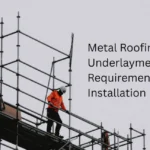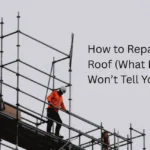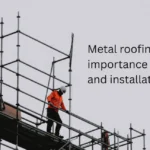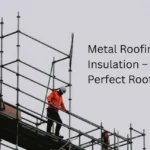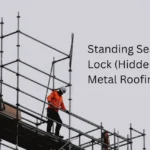Okay, now let’s discuss the types of metal roofing. There are different styles, unlike the traditional or conventional roofs with shingles, right? Each type is designed for a different purpose and offers different benefits. Most homeowners instantly associate residential roofs with asphalt shingles, but metal roofs are completely different. In fact, there are many different types of metal roofs. The term “metal roofing” is quite general and includes a wide range of distinct qualities—such as color, size, style, and material.
Shake-Inspired Metal Roofing
Shake inspired metal roofing is a type of metal roofing that imitates the look of conventional wood shakes or shingles. Shake inspired metal roofing is also known as shake inspired metal roofing. Homeowners who desire the traditional appearance of wood shakes but the toughness and lifespan of metal roofing often go for this option
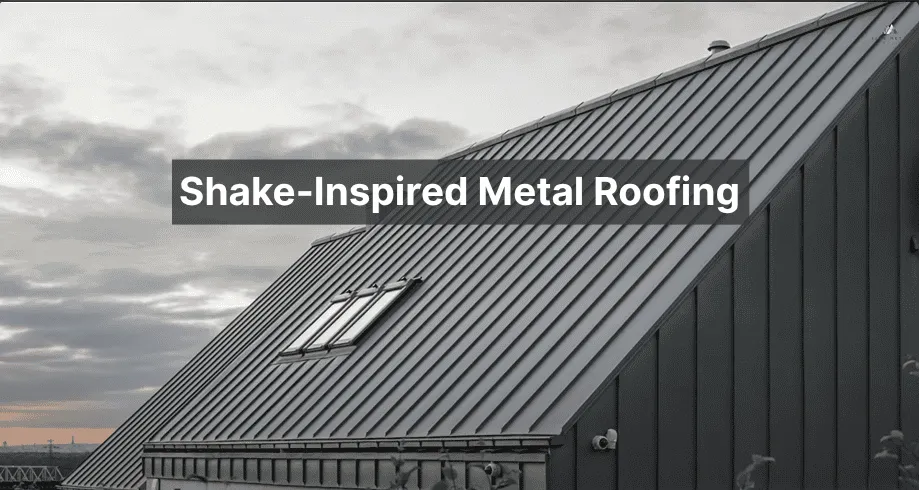
Metal roofing with a shake-like appearance is commonly fabricated from steel or aluminum and it is offered in a wide range of color options and surface finishes. The metal panels have a surface that is textured to give the impression that they are made of wood and are supposed to seem like shakes that are attached to a roof.
The longevity of a shake inspired metal roof is one of the roofing material’s many advantages. Metal roofing is resistant to moisture, insects, and fire in contrast to wood shakes, which can decay, distort, and break over the course of their lifetime.
In addition to this, it has a low maintenance requirement and with the appropriate amount of TLC, it can survive for decades. Metal roofing that is styled after shakes is another eco-friendly option because it is frequently manufactured from recyclable materials and can also be recycled when its useful life has passed. In addition, it is capable of reflecting heat, which in turn reduces the amount of heat that is absorbed by the roof, which in turn helps to lower energy bills.
Tile-Inspired Metal Roofing
Tile roofing is yet another well-liked roofing style, particularly in regions with warmer climates. There was a time when tile roofing was made entirely of natural materials such as clay or concrete. These days, however, there are metal roofing solutions that are inspired by the style of tile roofing and are much more long-lasting and simpler to mainta
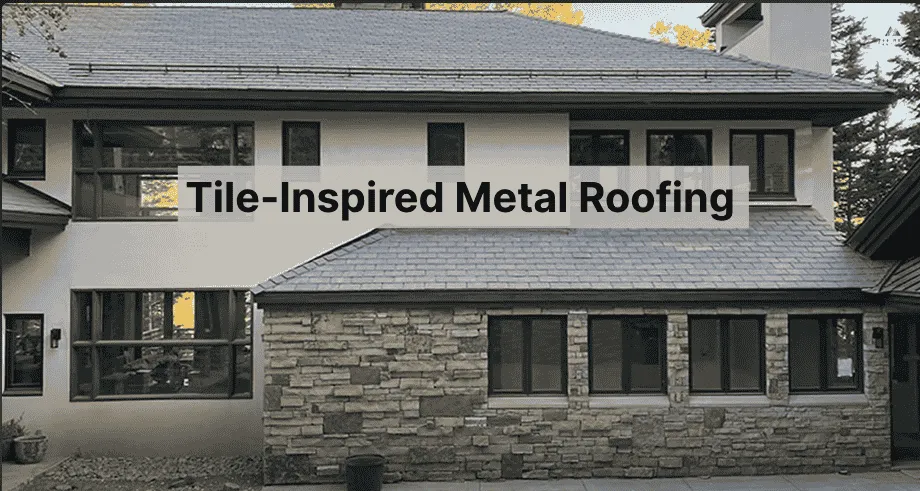
Tile inspired metal roofing is one style of residential metal roofing that is typically more cost effective than other types of residential metal roofing—despite the fact that all metal roofing options are likely to be more expensive than conventional asphalt shingle roofing.
Metal roofing that is patterned after tiles is noted for its durability even when exposed to elements such as wind, fire, rain, and hail. Keep in mind that tile inspired metal roofing is one of the most cost-effective roofing alternatives now available on the market when you are researching the various varieties of metal roofs that are available.
Slate-Inspired Metal Roofing
Because natural stone is an expensive material, classic slate roofs often have a high price point in comparison to the cost of other roofing materials. Because slate is typically quite heavy, using it as a roofing material can place a significant amount of strain on a roof and necessitates the use of reinforced rafters in order to lengthen the lifespan of the roo

Slate inspired metal roofing, on the other hand, enables homeowners to get the opulent appearance of real slate roofing without the additional weight and strain on the structure of their homes that would be caused by installing natural slate.
Zinc Metal Roofing
Number Six: Zinc
If you live in the United States, you might not be familiar with zinc as a material that can be used for the construction of long-lasting metal roofs. Zinc is utilized in the construction of a very small number of residential roofs in the United States, whereas it is utilized in an extremely high number of residential roofs in Europe.

Zinc is a very expensive material for use in roofing made of metal, but its high cost is justified by the fact that it can survive for up to a hundred years after being installed.
Zinc does not call for a great deal of upkeep because of its longevity, durability, and resistance to corrosion. In addition to this, it does not easily catch fire and naturally inhibits the formation of mold, mildew, and fungus.
Zinc is an excellent option to consider if you are searching for a material that is incredibly durable and you are ready to make an investment.
Aluminum Metal Roofing
Number Five: Aluminum
Aluminum is yet another type of metal roofing that is exceptionally long-lasting. It enables a quick installation while also providing numerous other benefits such as longevity, energy efficiency, resistance to fire, and protection against pests.
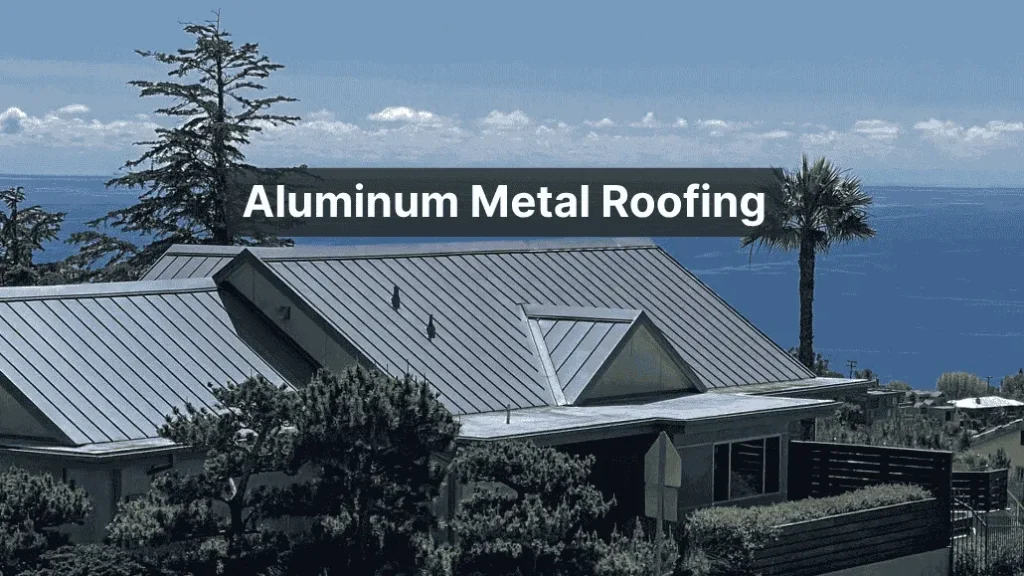
Aluminum is a naturally rust-resistant metal that is substantially lighter than steel, despite having comparable resistance to corrosion.
Aluminum roofing is highly reflective, which means that it can help to reduce energy expenses by reflecting sunlight and reducing the amount of heat that is absorbed by the roof. This helps to keep the interior of the building cooler, which in turn helps to keep energy costs lower.
This can help maintain your home at a more comfortable temperature during the summer, reducing the amount of time you spend running the air conditioner.
Aluminum is a recyclable material that can be recycled into different goods once it has reached the end of its useful life. This makes aluminum another environmentally friendly resource. Because of this, it is an environmentally responsible option for homeowners who are concerned about the world around them.
Aluminum roofing is advantageous in a number of ways, one of which is that it is lightweight and simple to install. Because of this, the installation process is often much quicker than it is with other forms of roofing, which can contribute to a reduction in the cost of labor.
Aluminum roofing is a great alternative for homeowners searching for a low maintenance and environmentally friendly roofing material because it is sturdy, long lasting, and energy efficient all at the same time.
Copper Metal Roofing
Number Four: Copper
Copper is your best bet if you want a metal roofing material that will endure the longest of any of the options available. If you are looking for a roofing material that will last for at least a century, this is an excellent option to consider.
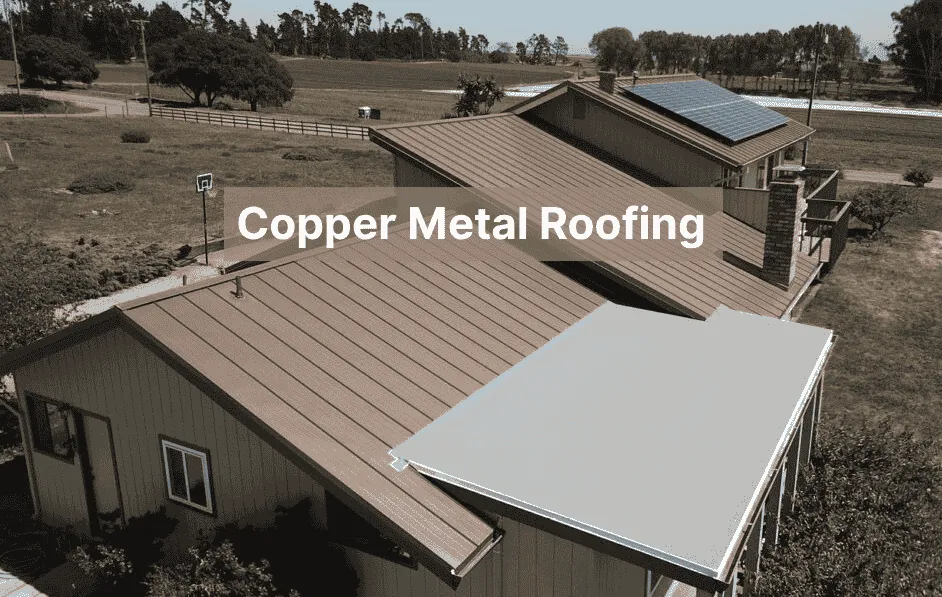
Having said that, copper does have a significant disadvantage to go along with its extensive list of advantages—copper is the most expensive roofing option, with zinc being the only material that can compete with its cost.
But with copper, you will receive the quality that you paid for. Copper is a strong and durable material that can withstand damage from a wide variety of sources, including fire, mildew, and even hail. Copper is also rather lightweight, meaning that it won’t place a lot of strain on the construction of your home because of its presence.
Galvanized Steel Metal Roofing
Number Three: Galvanized Steel
A zinc coating provides added corrosion resistance to the surface of a roof made of steel that has been galvanized. For the most part, the base metal of steel is then hot dipped into zinc for either a thick or a thin coat, depending on the request of the homeowner, in order to help preserve the steel roof from rust while also improving its beauty.
Corrugated Metal Roofing
Number Two: Corrugated Metal Roofing
Corrugated metal roofing is a popular and practical choice for a variety of applications. Its distinctive wavy pattern provides added strength and stiffness to the panels, making it ideal for use in agricultural and industrial settings.
Corrugated metal roofing is also known for its durability, resistance to weather and corrosion, and low maintenance requirements. It is available in a range of materials including galvanized steel, aluminum, and copper, which allows for customization based on specific needs and preferences.
Additionally, corrugated metal roofing is lightweight and easy to install, which can save time and money on installation costs. Overall, corrugated metal roofing is a reliable and cost-effective option for those looking for a long-lasting and low-maintenance roofing solution.
Standing Seam
Number One: Standing Seam
The popularity of standing seam metal roofing can be attributed to the material’s contemporary appearance, long life expectancy, and waterproof structure.
Standing seam metal roofing gives a broad range of benefits that are not available with asphalt shingles or other natural roofing materials. This is despite the fact that standing seam metal roofing is considered to be more of a premium roofing option.
Standing seam metal roofs can also be easily customized to meet the requirements of individual homeowners and their unique tastes.
| Type of Metal Roof | Pros and Cons |
|---|---|
| Shake-Inspired | Pros: Traditional wood look, fire/moisture/insect resistant, recyclable, low maintenance, long-lasting. Cons: Higher cost than asphalt shingles. |
| Tile-Inspired | Pros: Durable, cost-effective (for metal roofing), fire/wind/hail resistant, low maintenance. Cons: Still more expensive than asphalt shingles. |
| Slate-Inspired | Pros: Elegant slate look without weight, no need for roof reinforcement. Cons: May still be expensive; less authentic than real slate. |
| Zinc | Pros: Lasts 100+ years, corrosion resistant, fire/mold/mildew resistant, low maintenance. Cons: Very expensive; less common in U.S. |
| Aluminum | Pros: Lightweight, rust-proof, energy-efficient, recyclable, quick installation. Cons: Can be more expensive than some steel options. |
| Copper | Pros: Extremely durable (100+ years), fire/mildew/hail resistant, lightweight, beautiful aging. Cons: Most expensive option. |
| Galvanized Steel | Pros: Corrosion resistant, customizable coating thickness, good lifespan. Cons: May rust over time if coating wears off. |
| Corrugated Metal | Pros: Strong, wavy pattern adds stiffness, easy installation, low cost, low maintenance. Cons: Less weather-tight than standing seam; industrial appearance. |
| Standing Seam | Pros: Hidden fasteners, sleek design, highly weather-tight, long-lasting. Cons: Expensive, complex installation (not DIY-friendly). |
Final Words
What do you think of our post? Let me know in the comment section below. If you enjoyed this post and want to hear from me again, be sure to hit that like button before you go. Thanks for watching.
What are the different types of metal roofs available?
Common types of metal roofs include standing seam metal roofs, corrugated metal roofing, metal shingles, and stone-coated steel tiles. Each type varies in design, durability, and application.
What are the most popular types of metal roofing for residential homes?
For residential buildings, the best metal roof types are standing seam and metal shingles. They offer a sleek look and are excellent for long-term weather resistance.
What are standing seam metal roofs and their types?
Standing seam metal roofs feature vertical panels with concealed fasteners. Their types include snap-lock, mechanically seamed, and batten panel systems—ideal for clean aesthetics and durability.
How do I choose the best type of metal roof for my house?
Consider climate, budget, and roof slope. Standing seam is best for modern homes, corrugated metal is budget-friendly, and metal shingles are great for a classic look.
What materials are used in different types of metal roofing?
Metal roofs can be made from steel, aluminum, zinc, or copper. Each material has its pros and cons in terms of cost, corrosion resistance, and lifespan.

Hello! I’m Abdullah, a passionate professional in the field of construction and roofing. I am the proud owner of SJ Roofing & Venting, a leading construction company based in New York. With years of hands-on experience, I write about various construction methods, techniques, and industry insights to share my knowledge and help others in the field. I’m also the founder and main contributor of this website.


